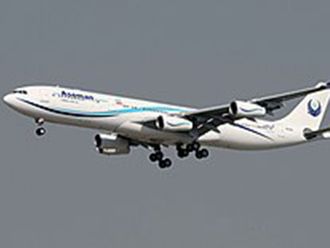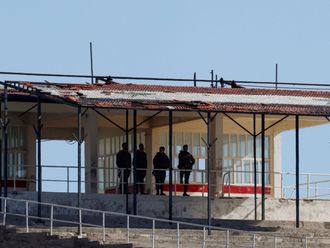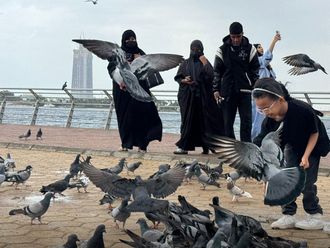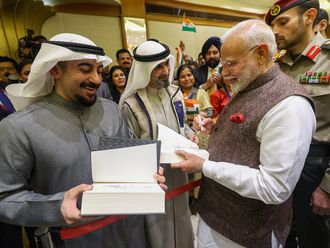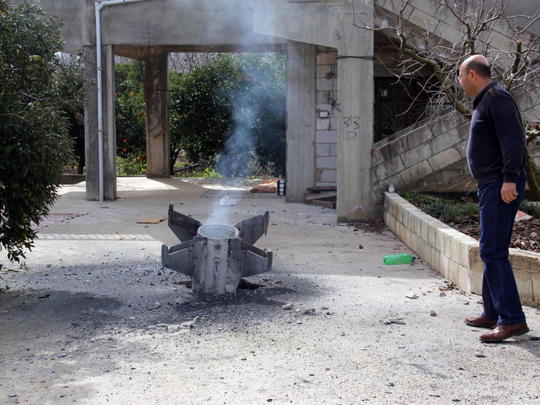
Beirut: When an Iranian drone flew into Israeli airspace this month, it set off a rapid series of strikes and counterstrikes that deepened fears over whether a new, catastrophic war was brewing in the Middle East.
That flare-up ended quickly, if violently, with the drone destroyed and an Israeli jet downed after bombing sites in Syria. But the day of fighting drew new attention to how deeply Iran has embedded itself in Syria, redrawing the strategic map of the region.
Tactical advisers from Iran’s Islamic Revolutionary Guard Corps are deployed at military bases across Syria. Its commanders regularly show up at the front lines to lead battles. Iran has built and continues to back powerful militias with thousands of fighters it has trained in Syria. And it has brought in new technologies, like drones, to spy on enemies and perhaps to attack them from the sky.
Both Israeli officials and Israel’s enemies say that any new conflict between Israel and Iran or any of its allies could mobilise Iran’s expanding network of militant proxies in multiple countries, what Iran refers to as “the axis of resistance.”
“If there is a war, it will be regional,” said Kamel Wazne, founder of the Centre for American Strategic Studies, in Beirut, who studies the policies of the United States and Iran in the Middle East.
“Any confrontation will be with the whole resistance front against Israel and its backers.”
Iran and its allies first intervened in Syria to defend the rule of President Bashar Al Assad against Syrian rebels after the civil war broke out in 2011, and later helped his forces against Daesh.
But as the rebels have lost ground and no clear threats to Al Assad’s rule remain, Iran and its allies have stayed, shifting their focus to creating an infrastructure to threaten Israel, analysts say.
Iran continues to train and equip fighters while strengthening ties with allies in Iraq and Lebanon, in hopes of building a united front in the event of a new war.
“The ultimate goal is, in the case of another war, to make Syria a new front between Israel, Hezbollah and Iran,” said Amir Toumaj, a research analyst at the Foundation for Defense of Democracies who studies Iran.
“They are making that not just a goal, but a reality.”
Iranian leaders speak openly of their work to build this axis of resistance against Israeli and US. influence.
A key to Iran’s strategy, analysts and officials say, is to rely not on conventional military hardware or control of territory, which Israel can easily bomb, but on building ties with local forces who share its goals and benefit from its financing and expertise.
That approach has enabled Iran to amplify its power in the Arab world while decreasing the threat to its own forces and homeland.
It has also created a problem for countries including the United States, Israel and Saudi Arabia, who fear Iran’s growing influence but have struggled to come up with ways to stop it.
Some people in Israel have started referring to a potential “First Northern War,” meaning that Israel will have to fight across both the Lebanese and Syrian frontiers. And many Israelis say the danger is not just from the new Iranian-backed militias, but also from the Iranian efforts to give advanced, high-precision weapons capable of hitting sensitive infrastructure to Hezbollah, Iran’s most powerful and experienced external force.
Israeli officials have said Iran and its allies are seeking to establish a land corridor from Iran to the Mediterranean, via Iraq, Syria and Lebanon, to ease the transportation of such weapons and to build underground factories to manufacture them in Lebanon and Syria.
Israel has been bombing convoys in Syria that are believed to be carrying advanced arms to Hezbollah, but the group’s covert nature makes it hard to determine which arms have slipped through and whether its arms factories are functioning.
Such arms, coupled with heavy barrages from the more than 100,000 rockets and missiles without high-precision targeting capability that Israel says Hezbollah has, could overwhelm Israel’s defenses.
“Israel will face not only quantity, but the threat to vulnerable strategic sites,” said Yaakov Amidror, a former Israeli national security adviser and now a fellow at the Jerusalem Institute for Strategic Studies. Referring to the combination of more precise weapons and a new front, he added: “Each one is problematic; together, they are devastating.”
Iran’s moves in the region have alarmed the United States.
“What’s particularly concerning is that this network of proxies is becoming more and more capable as Iran seeds more and more” of its “destructive weapons into these networks,” Lt. Gen. H.R. McMaster, President Donald Trump’s national security adviser, said at a security conference in Munich, Germany, on Saturday.
“So the time is now, we think, to act against Iran,” McMaster added.
In expanding its influence in Syria in recent years, Iran has followed a standard template. In Lebanon in the 1980s, it helped create Hezbollah, which has since evolved into the country’s predominant military force and a regional power in its own right, joining the wars in Syria, Iraq and Yemen. In Iraq, Iran has sponsored a range of militias while developing deep ties to the Iraqi economy and political system.
The war in Syria gave Iran a new opportunity to advance that project by linking its allies across the Levant together.
Estimates of the number of Iranian military personnel in Syria today range from the high hundreds to the low thousands.
While some directly participate in combat, most are trainers, commanders or experts who advise the Syrian military and oversee militias.
It is these militias, which could have as many as 20,000 fighters, that give Iran its true muscle.
Those fighters include about 6,000 from Hezbollah. Most of the rest of the militia members - who come from Afghanistan, Iraq, Lebanon, Pakistan and elsewhere - have been enticed to fight in Syria with money and appeals to their Shiite faith.
Indeed, most see the war in Syria in religious terms, as a religious duty against their enemies.
Ali Al Foneh, a researcher at the Atlantic Council who tracks reports of foreign militia fighters killed in Syria, said the number of deaths reported had decreased substantially as those fighting for Al Assad have gotten the upper hand in the war. But instead of leaving the country, he said, the militias appeared to be shifting their sights toward Israel.
“Iran has realised that it is actually possible to maintain a front against Israel where there is no war but also no peace,” Al Foneh said.
In his research, Al Foneh said he had identified three main Iranian bases that oversee operations in large parts of Syria - one near Aleppo in the north and two south of the capital, Damascus - as well as seven smaller tactical bases near active front lines where Iran and its proxies have a presence.
The idea of a permanent Iranian presence in Syria worries Israel, which fears that it could face a threat there similar to that posed by Hezbollah in Lebanon. Analysts close to Iran and its proxies say that is exactly the idea.
“It’s like a replication of the Hezbollah model,” said Ali Rizk, a Lebanese analyst who writes for Al Monitor, a news website focused on the Middle East. Iran is training fighters in southern Syria, he said, so that if Hezbollah draws down its presence there, as its leaders have vowed to, it will leave behind a Syrian clone.



